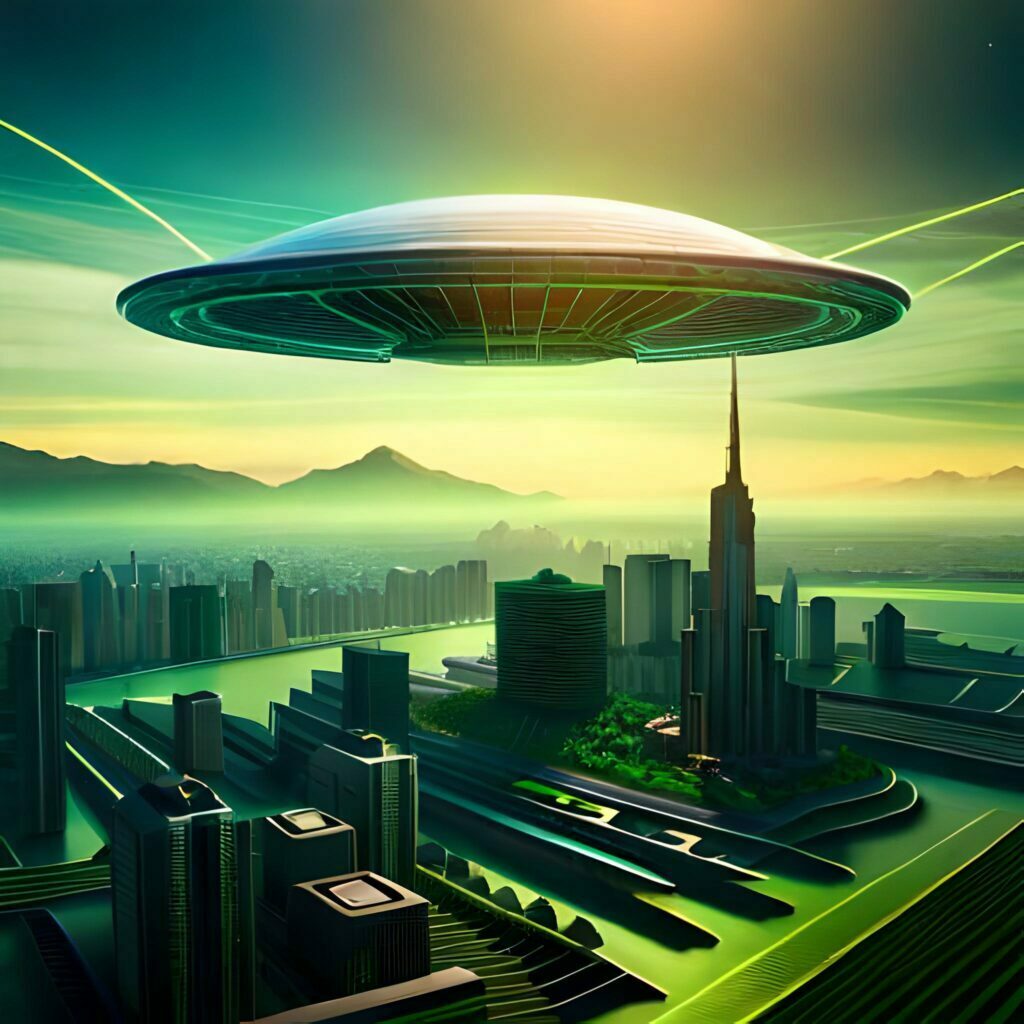Table of Contents
Emergence of Intelligent Life: A Lucky Event?
Earth is the only planet known to us that witnessed the emergence of intelligent life. Scientists believe that Mars or some moons of our Jovian planets (such as Jupiter or Saturn) could harbor simple prokaryotic or unicellular eukaryotic life forms. Scientists would be elated if they could find multicellular eukaryotic orgasms swimming at the depth of sub-surface oceans of any of the Jovian moons.
But intelligent life is a different ‘beast’ altogether. Other than Earth, there are no intelligent life forms within the solar system, not even on Mars. With the discoveries made by the Kepler Mission, we have found many potential habitable planets, but there is a very slim probability that any of them have witnessed the emergence of intelligent life forms.
We can say this as intelligent life would alter its planet’s environment and possibly the environment of its solar system. These alterations would have been easily detectable by an advanced space telescope. An intelligent life would also use various methods, such as radio signals, to communicate with other advanced civilizations. But, till now, we see none of these anywhere in our galaxy.
If we look at our Universe, Solar System, and planet Earth, we see that multiple factors have contributed to the emergence of intelligent life forms. The ingredients that make simple life are very common in the Universe. Carbon, Oxygen, Nitrogen, Hydrogen, Sulfur, Calcium, Iron, Phosphorus. So, it would not be a surprise if we find simple and non–complex life in other parts of the Solar System and other parts of the Universe. However, for the emergence of intelligent life, those above-mentioned factors have to be present.
Intelligent life is so delicate that it would require some very perfect environments and conditions for it to emerge. Now, if it is just luck or some statistical consequence or some divine intervention, is up for debate. Let’s look at some of those “lucky” factors which have contributed to the existence of intelligent life on Earth. Some of the factors are Universal in that they would apply to all the potential habitable planets or moons. Some factors are local and limited to the solar system or the planet itself.
Universal Factors for the Emergence of Intelligent Life
1. Matter Asymmetry: Matter vs Anti-matter
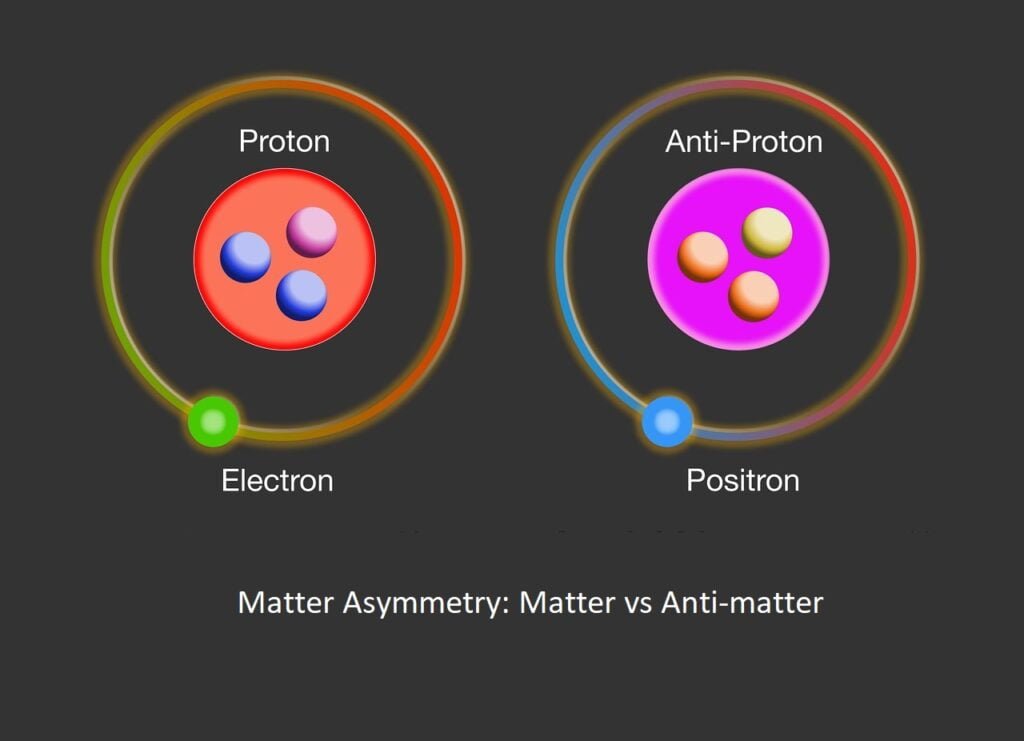
If we humans ever write a story about the Universe, the matter would be the superhero who defeated the deadly supervillain – the anti-matter. Antimatter is the twin of matter but with opposite charges and if matter and antimatter particles come in contact with each other, they would destroy each other.
During the Big Bang, the universe was supposed to create equal numbers of matter and anti-matter. In that scenario, each matter and antimatter should have annihilated each other and released gamma rays. But it did not happen. For a billion antimatter particles, there were a billion and one matter particles that existed.
Why it happened? We have yet to figure this out. But whatever the reason is, we humans sure not complaining. Without matter particles, there would not be a Sun or an Earth or anything in this Universe. The Universe would have been filled with radiation and with energy. Not an ideal place for any type of life.
What would have happened if there were more anti-matter than the matter? Well, it would not have hindered the emergence of intelligent life. All the things that we see in the Universe would have been made of anti-matter and we would have called it ‘matter’. The important thing is, that there is asymmetry that prevents the total annihilation of matter or anti-matter particles.
2. Distribution of Matter
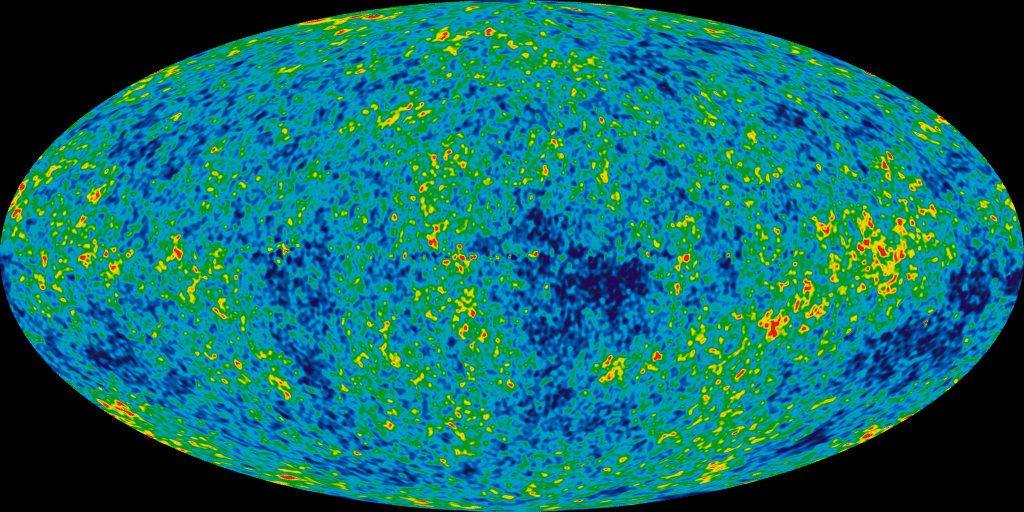
Another factor for the emergence of intelligent life was the distribution of matter which came into existence just after the big bang. After the Big Bang, it took some time for the Universe to cool down. After it cooled down enough, matter was created out of pure energy. The matter in the early Universe should have been evenly spread and smoothly distributed. But for some reason, the distribution of matter showed small irregularities. These small irregularities caused matter to clump together which can be seen in the Cosmic Microwave Background.
We could see these early clumps of matter which would later form big structures of the Universe such as galaxy clusters, galaxies, stars, planets, etc. On the other hand, if the irregularities in the distribution of matter had been larger, it would have collapsed back onto itself and would have formed black holes.
This precise distribution of matter has made it possible for life to exist. Without these clumps of the early Universe, there would not be any Solar Systems or Suns or planets and there would not have been the emergence of intelligent life. The emergence of simple life forms in the gooey puddles of ancient Earth owed gratitude to this clumpy nature of matter.
3. Precise Rate of Expansion of The Universe
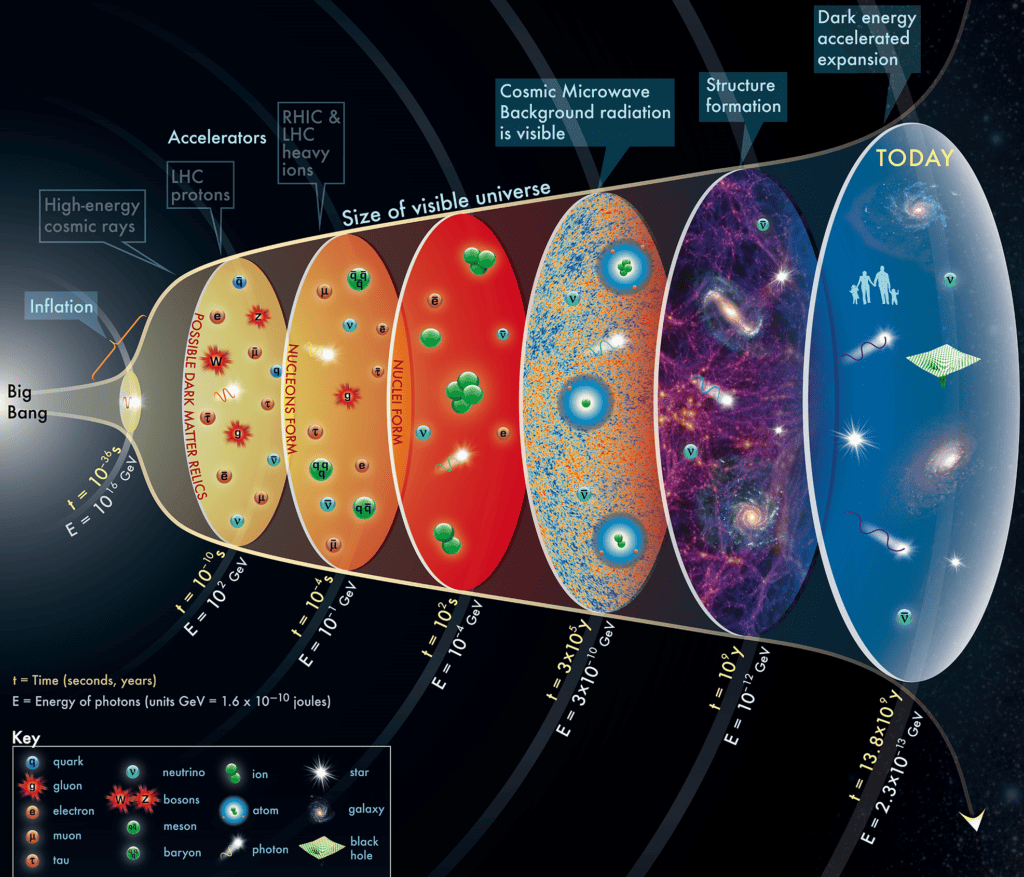
Even though the “Big Bang” is called Big Bang, there was no explosion. What happened during the Big Bang is that the Universe started very small, dense, and hot and then it started to expand. The rate at which it expanded is of huge significance to the emergence of intelligent life (or any life for that matter) in the Universe. Currently, the rate of expansion for the Universe is roughly 45 miles/Second/Megaparsec.
This rate of expansion had to be precise. At the time of the Big Bang, if the rate of expansion was down just by 1/1018 part, the Universe would have continued to expand forever and it would never form any stars or galaxies or planets and as a result, we humans would never existed.
Again, if the rate of expansion was up by a similar fraction, the Universe would have collapsed back into itself and as a result, it would have been destroyed. The precise rate of expansion has enabled the Universe to form structures like galaxies, stars, and planets and in turn, has enabled the emergence of intelligent life.
Local Factors for the Emergence of Intelligent Life
4. Earth’s Position: Goldilocks Zone
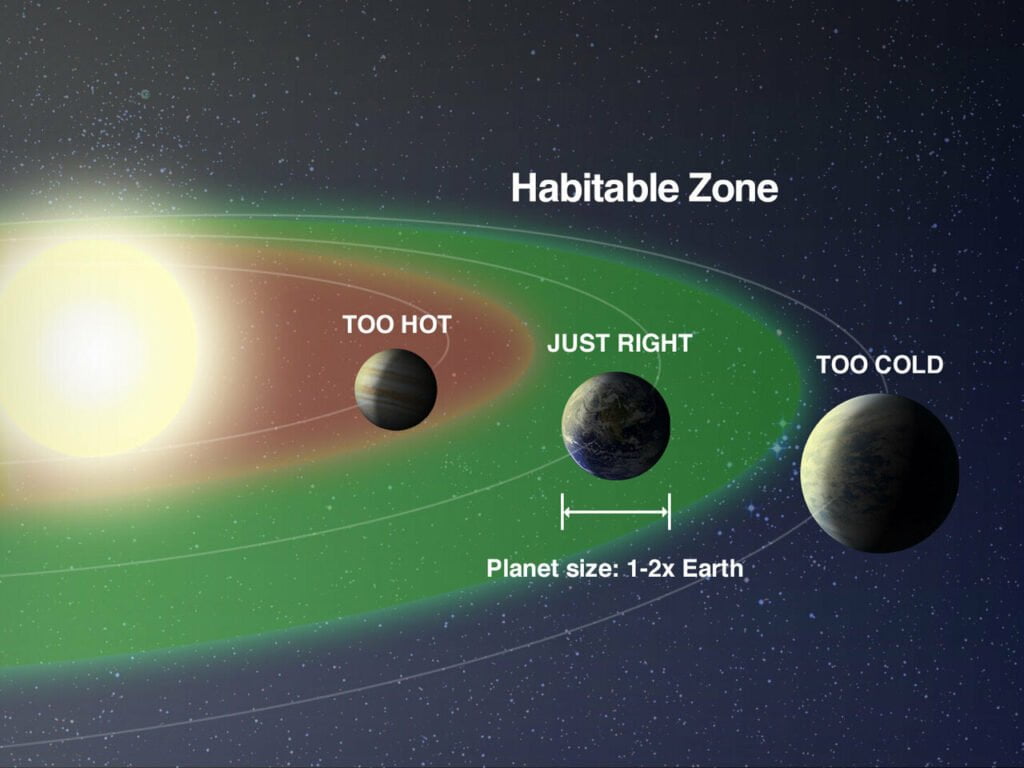
For a star, the ‘Goldilocks zone’ or habitable is the zone in which, if a rocky planet exists, then the heat from the star will be conducive for the liquid water to exist on the surface of that planet. Each star has its own ‘Goldilocks zone’ or habitable zone. This zone can differ depending on the size, mass, and luminosity of the parent star.
Sun’s Goldilocks zone starts just outside Venus and ends just before Mars. Our Earth is the only planet in the sweet spot of the Sun’s Goldilocks zone. Venus is a bit inside of the Sun’s Goldilocks zone while Mars is a bit further out from the Sun’s Goldilocks zone. For a star that is much bigger than the Sun, the Goldilocks zone will be further out while for Red Dwarf stars, which are 50% to 10% mass of the Sun, the zone will be further inward.
Whether a rocky planet is within the Goldilocks zone or not has enormous consequences for the emergence of intelligent life. For example, as Venus is further inward to the Goldilocks zone, it has become, with the help of the runaway greenhouse effect, an inhospitable planet for any form of life.
5. Solar System’s Place in Milky Way
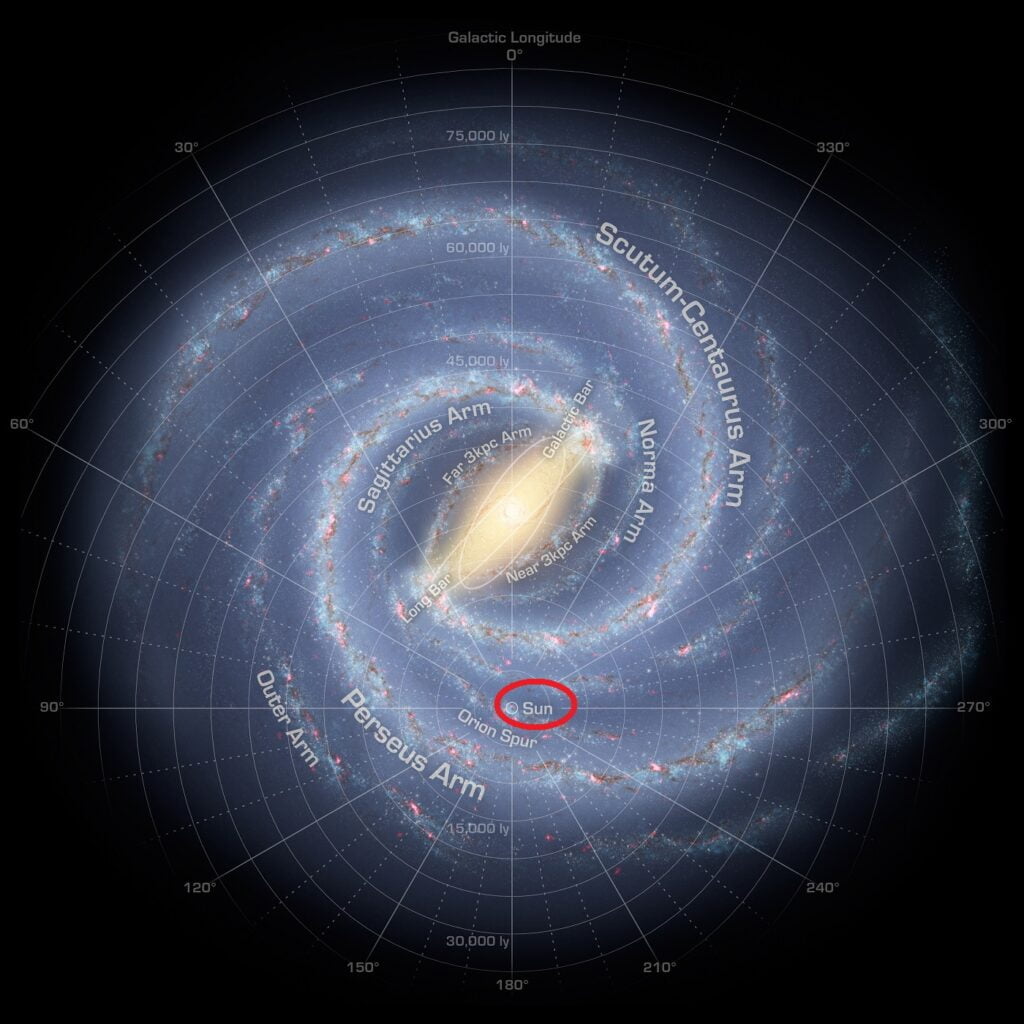
Not only just the position of a planet within its Solar System, but a Solar System’s position within its own galaxy has consequences for the emergence of intelligent life. Our Sun and Solar Systems are in the outer reaches of one of the Milky Way’s hands. It is relatively a quieter place compared to the center of the galaxy.
The center of the Milky Way has a supermassive black hole in it. Every single galaxy that scientists have observed contains a supermassive black hole. The name of the supermassive black hole at the center of the Milky Way is called – Sagittarius A. Just like the solar system revolves around our Sun, our entire galaxy revolves around Sagittarius A. All the galaxies of the Universe revolve around its own supermassive black hole.
These supermassive black holes have enormous gravitational pull in that even massive stars near these black holes zip around these black holes at enormous speed. Also, due to the gravitational pull of these black holes, the center of the galaxy is always congested with stars and other celestial objects. The center of a galaxy is not conducive to the emergence of intelligent life.
In the center of the galaxy, a planet like Earth would have been bombarded with radiation from nearby hundreds, if not thousands, of stars. There would have been a greater probability of a collision with other planetary objects or even with a star. The Solar System would have been exposed to constant gravitational tug from other massive stars which would have distorted the orbits of planets. All these factors would have hindered the emergence of intelligent life on Earth if our Solar System were situated near the center of the Milky Way instead of its outer reaches.
6. Jupiter and Saturn As Shield
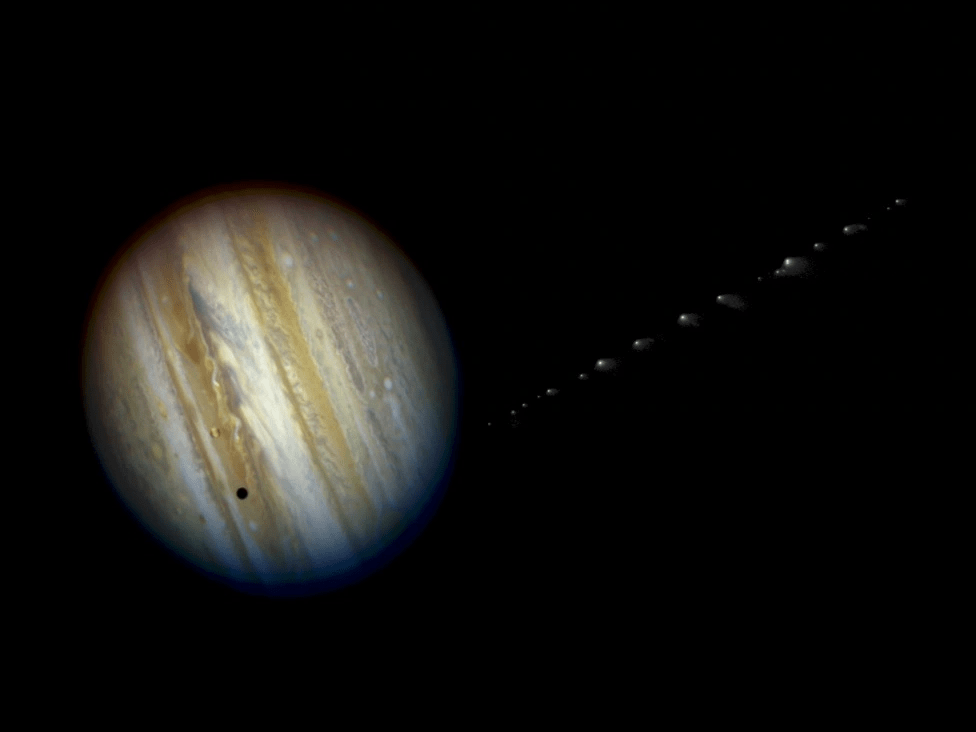
In July 1994, a comet named Shoemaker-Levy 9 had slammed into Jupiter. If this comet were to collide with Earth, it would have been an extinction-level event that would have destroyed all life on Earth. Big Jovian planets, such as Jupiter and Saturn with their enormous gravitational pull, act like a shield that protects the inner Solar System from any deviating or rough comets and asteroids. It can be deduced that in the past also these Jovian planets have protected the inner Solar System and Earth from wayward asteroids and comets – helping in the emergence of intelligent life and in sustaining it.
Of course, it does not mean that they would always be able to protect the Earth as Dinosaurs killing asteroids had eventually slammed into Earth destroying the big lizards. Also, they could attract these comets and asteroids and can fling them toward Earth. However, these Jovian planets do play their part in making the inner solar system less chaotic by attracting various space objects that otherwise could have made their way toward the inner Solar System and eventually toward Earth.
7. Saturn’s Influence
Apart from flinging wayward comets and asteroids from the inner solar system, Saturn had played an extremely important part in the emergence of intelligent life on Earth, or the emergence of any life for that matter. Scientists have looked at the other star systems and found that ‘Hot Jupiter’ – which are Jupiter-like Jovian planets orbiting its host star closer to Mercury does to the Sun. These ‘Hot Jupiter’ planets have formed further from its host star and then migrated inwards and now orbit very close to its parent star. However, we don’t see any ‘Hot Jupiter’ in our Solar System. The Jovian planets of Solar Systems orbit the Sun further away from it.
Scientists believe that in the early history of the Solar System, Jupiter, due to the Sun’s gravitational force and due to the gravitational tug of other 100s of early planetesimals formed in the early Solar System, started to migrate inward of the Solar System. It is hypothesized that this inward migration of Jupiter is the reason for Thia’s collision with Earth. If Jupiter were to come even closer, it would have created havoc in the inner Solar System and the Earth might have destroyed tor flung out of the Solar System due gravitational tug of war.
However, thankfully we had another big-sized Jovian planet -Saturn – whose gravitational pull stopped Jupiter’s inward migration and stabilized Jupiter’s orbit. This in turn stabilized the early Solar System and helped in the emergence of intelligent life on Earth.
8. Earth’s Magnetic Field

Earth’s molten core is still active. As Earth rotates, along with it rotates its molten core. Due to this rotation, it creates a strong magnetic field around the planet. This magnetic field played a big role in the emergence of intelligent life on Earth and it continues to play a role in protecting the life on Earth. This magnetic field protects Earth’s atmosphere from Solar and cosmic radiation. Without it, Solar and cosmic radiation would have destroyed its atmosphere and exposed Earth’s surface to deadly radiation causing mass extinction of life on Earth.
Interestingly, Mars once had harbored liquid water on its surface and most probably life too. At that time it had an active core and Mars’s rotation had created a strong magnetic field around it which probably allowed the emergence of simple life on Mars.
However, as Mars is smaller than Earth and probably older than Earth, its core cooled, and due to this the magnetic field around it weakened. Around 4 Billion years ago Mars’s magnetic field disappeared and as a result, its atmosphere and surface were exposed to deadly Solar and cosmic radiation which in turn withered away its atmosphere and water on the surface eventually cooling the planet to such a degree that it can no longer have liquid water in its surface.
Whatever life Mars had died along with its magnetic field. At the current time, Mars has a very thin atmosphere and a very localized magnetic field – both of which are not enough for the survival of life or the emergence of intelligent life on its surface.
9. Water Carrying Asteroids, Comets, and Meteorites

Asteroids from space have destroyed the dinosaurs from the face of the Earth. It is believed that humanity faces extinction-level threats from these asteroids and comets. Ironically these asteroids, comets, and meteorites (smaller space rocks), or specifically ‘carbonaceous chondrites’, have paved the way for the emergence of intelligent life on Earth by supplying the most important ingredient for life – Water.
Water is the basis of life on Earth. Without it, there would be no emergence of intelligent life or any form of life for that matter. However, Earth did not have water to begin with. When it was formed 4.6 Billion years ago, it was a hot molten ball of rock whose surface was overflowing with lava – not a conducive scenario for the emergence of intelligent life. Whatever water it may have would have evaporated due to the extreme heat.
But then it cooled down and then around 3.8 Billion years ago, Earth was bombarded with water-carrying asteroids, comets, and meteorites, specifically carbonaceous chondrites which had 20% water by body mass. These space rocks filled Earth’s surface with water needed to seed early life which eventually helped the emergence of intelligent life.
10. Balanced Atmosphere of Earth
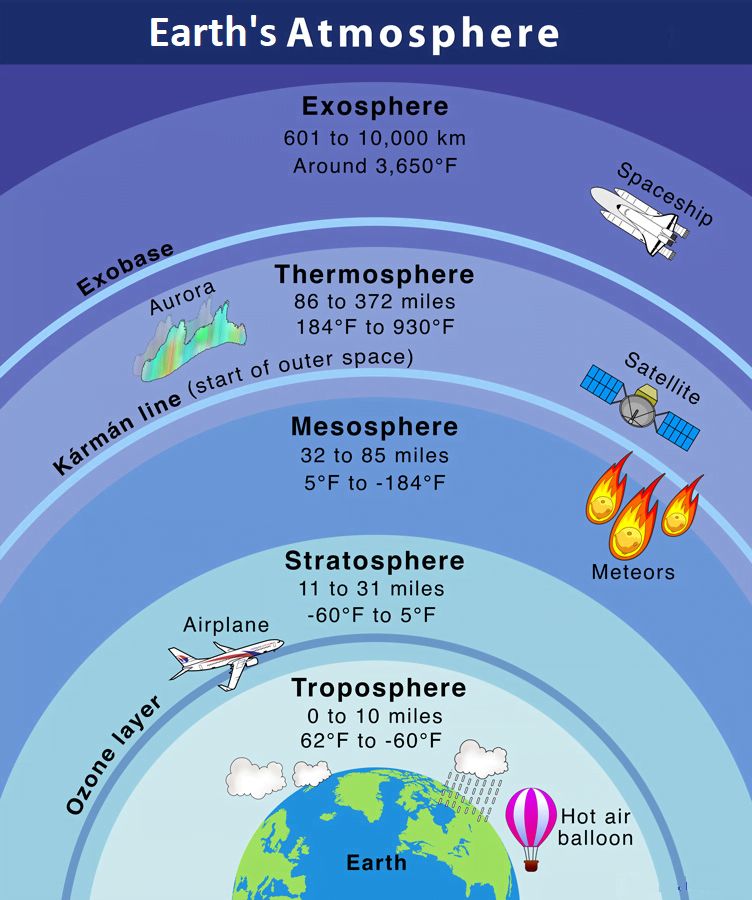
In the Solar System, there are some rocky planets and moons (of the Jovian Planets) which have an atmosphere. However, none of them, except Earth’s, is conducive to the emergence of intelligent life. For example, Venus’s atmosphere is too thick, hot, and toxic, and its pressure is almost 90 times that of Earth’s. On the other hand, Mars’s atmosphere is very thin and almost half of that of Earth. Both planet’s atmospheres are extreme, on either side, for the emergence of intelligent life forms.
Earth’s atmosphere stands out in that it is not only able to sustain life on Earth but also it can create an environment conducive for the emergence of intelligent life. Early Earth contained an atmosphere that comprised mostly of hydrogen and helium. These two very light gasses soon evaporated from the atmosphere and now can only be found on traces at the very upper level of the atmosphere.
Then, volcanic eruptions of Earth created a thick CO2-rich environment. This environment was conducive to the emergence of simple life. Certain bacteria (cyanobacteria) allegedly contained a green substance, chlorophyll, which can trap sunlight and use this CO2 to create simple carbohydrates as a source of energy. These bacteria allegedly released oxygen as a byproduct of this process – photosynthesis.
A CO2-rich environment was conducive to the photosynthesis-dependent organism but it was not conducive to the emergence of intelligent life. For that, the environment had to be tweaked. Bacteria, allege, and other microorganisms that were doing photosynthesis, have restricted use of energy. They were not able to produce enough energy to move quickly through their environment.
The emergence of intelligent life needed a quick release of energy so that the organism could move faster through its environment. In this scenario, the oxygen, a by-product created by the cyanobacteria and alleged, came in handy. Different types of organisms emerged that were able to use oxygen and released abundant amounts of oxygen which gave them mobility and is responsible for the emergence of intelligent life forms.
In a cyclic nature, organisms such as plants, and cyanobacteria use CO2 and create O2. The O2 is then used by animals and they release CO2. This way a perfectly balanced atmosphere is created which aids the emergence and sustenance of all life forms including intelligent life.
Earth’s atmosphere also has some other crucial functions which helped the emergence of intelligent life. It can block harmful radiation that manages to slip past Earth’s magnetic field. The Ozone layer (O3) on the upper layer of the atmosphere stops the Ultraviolet radiation from coming to Earth’s surface which would have had extremely harmful effects on the lives of living animals and plants.
Earth’s atmosphere also burns down any meteorites that get inside Earth and reduces its size significantly to meteorites. Many small and mid-size meteorites burn out in the atmosphere itself before hitting Earth. These meteorites may not have caused extinction-level destruction, but they are capable of causing significant damage to human lives and properties.
Read More
- Top 4 Important Vegetable Groups That You Should Be Aware Of
- Discoveries by JWST: 10 Incredible Findings of The Telescope
- Space Science: 6 Vital Reasons Why We Should Invest in It
- Solar System: 10 Astonishing Uniqueness of our star system
- Our Universe: An Incredible Journey of 13.7 Billion Years
- Indian Gooseberry (Amla): 10 Amazing Facts About This Wonder Fruit
- Top 6 Solar System Objects That Might Destroy Life On Earth
- The Great Physicist Peter Higgs Passes Away at 94
- Certain End of The Universe: 4 Forces of Nature to Watch Out For
- Big Bang: An Incredible Start of Universe 14 Billion Years Ago

